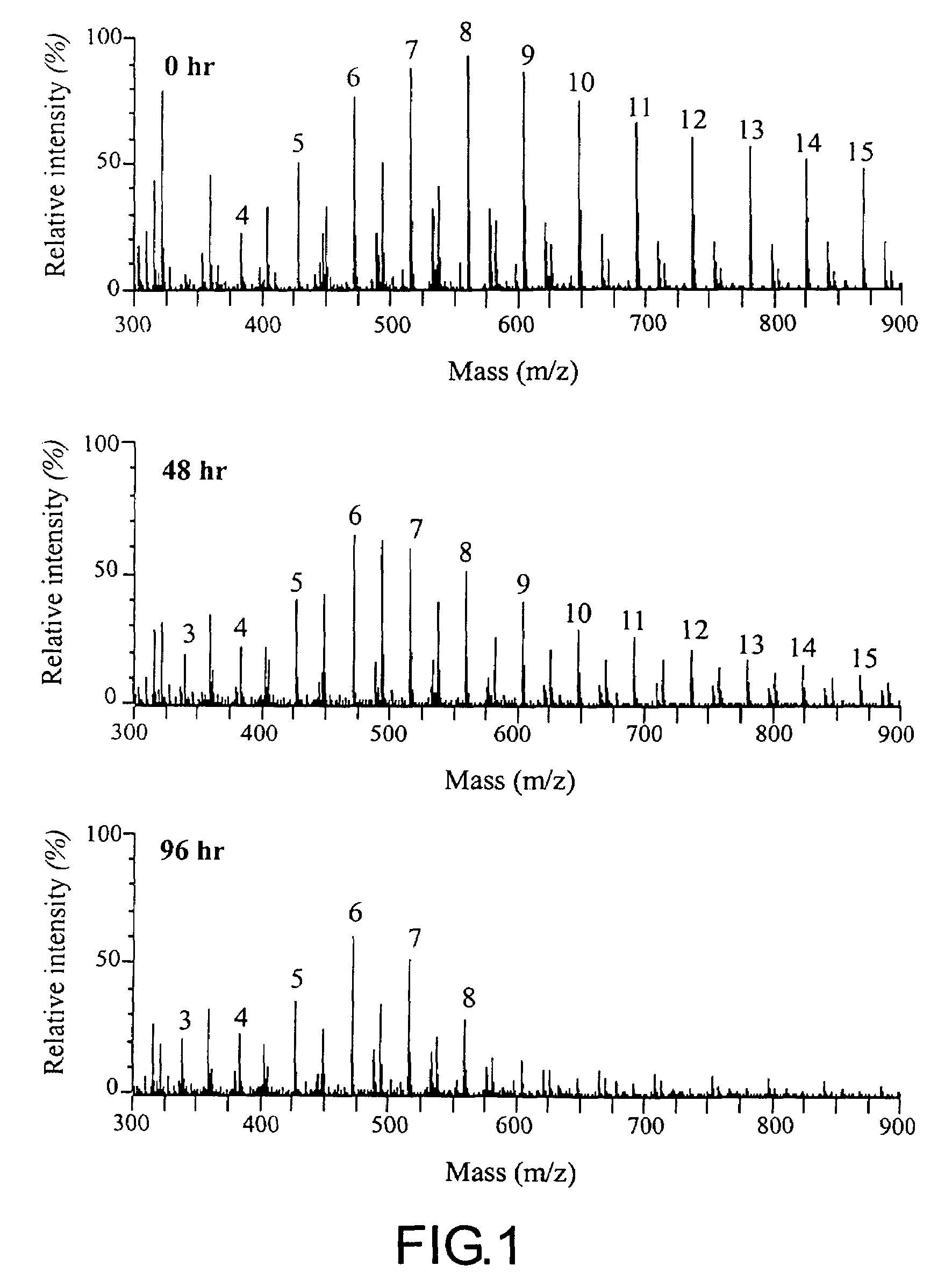Method for cleavage of ether-linkages in polyethoxylates
a technology of ether-linkage and polyethoxylate, which is applied in the field of biocatalysis, can solve the problems of environmental pollution, large amount of energy, and damage to ecological systems and human health, and achieve the effect of less energy and more environmentally friendly
- Summary
- Abstract
- Description
- Claims
- Application Information
AI Technical Summary
Benefits of technology
Problems solved by technology
Method used
Image
Examples
Embodiment Construction
[0017]The following is a description of the preferred embodiments of the present invention, as illustrated in the accompanying figures (FIGS. 1, 2 and 3) and are set forth for the purpose of explanation and not limitation, to provide a thorough understanding of the present invention.
[0018]The present invention provides a method of using a microbial culture to cleave ether-linkages in order to degrade polymers. The culture (Pseudomonas nitroreducens TX1) that is used in the present invention was deposited on Aug. 6, 2003, at Biological Resources Depository and Research Center (BRDRC) at Institute of Food Industrial Research and Development, R.O.C. The depository number of the culture is BCRC910228. The microbial culture is a Gram-negative rod-shaped bacterium Pseudomonas nitroreducens TX1. The characteristics and relevant information of the pure novel culture of Pseudomonas nitroreducens TX1 are disclosed in R.O.C. Patent Application 92126305.
[0019]In the present invention, a pure cu...
PUM
| Property | Measurement | Unit |
|---|---|---|
| pH | aaaaa | aaaaa |
| inlet temperature | aaaaa | aaaaa |
| concentration | aaaaa | aaaaa |
Abstract
Description
Claims
Application Information
 Login to View More
Login to View More - R&D
- Intellectual Property
- Life Sciences
- Materials
- Tech Scout
- Unparalleled Data Quality
- Higher Quality Content
- 60% Fewer Hallucinations
Browse by: Latest US Patents, China's latest patents, Technical Efficacy Thesaurus, Application Domain, Technology Topic, Popular Technical Reports.
© 2025 PatSnap. All rights reserved.Legal|Privacy policy|Modern Slavery Act Transparency Statement|Sitemap|About US| Contact US: help@patsnap.com



